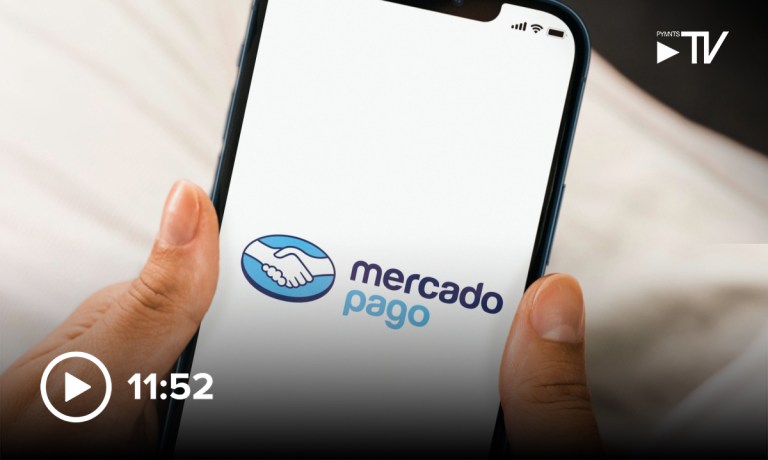
Most countries measure banking activity in terms of where and how it happens. Hence distinctions such as in-branch, ATMs, online and mobile. But in Latin America, for all intents and purposes, there’s only one kind of banking: digital.
It’s reflected in PYMNTS recent “How The World Does Digital” report that showed Brazil had the highest digital engagement out of the 11 countries surveyed, with mobile banking engaged at least weekly by 63.2% of respondents, with online banking at 59.4%. The rest of the world checked in at 46.8% and 42.4% accordingly.
All of which is music to the ears of Osvaldo Giménez, President-Fintech, MercadoLibre, and CEO of Mercado Pago, Mercado Libre’s financial services unit, accounting for 50 million active users and $50 billion in transaction volume, where he oversees the business strategy, including product development and promotion.
Mercado Libre is the largest eCommerce and payments ecosystem in Latin America, operating a diversified business model in 18 Latin American countries across financial services, advertising, credit and shipping logistics.
Giménez joined Mercado Pago in 2004 and became president in 2020 after serving as country manager for Mercado Libre in Argentina and launching in Chile, Uruguay and Peru.
“I think that what has happened in Brazil has been amazing,” he told Karen Webster recently. “The central bank has taken an approach that says, ‘I’m OK with innovation, and I want to increase competition.’ In some countries you see that there’s a strong lobby from traditional banks to prevent competition. In Brazil everyone wants a level playing field. They want innovation to happen.”
And Mercado Libre, as well as Mercado Pago, is ready to test that innovative spirit outside of Brazil. The company has bold expansion plans as it looks to become the dominant digital bank in Latin America, including its recent application of a digital banking license in Mexico. What began as an eCommerce platform akin to eBay now challenges traditional banks and drives financial inclusion across the continent.
“If we were to look probably 10 years back and look at how the financial system worked in every country in Latin America, typically you had a very high concentration among five or six banks per country,” Giménez said. This concentration, he argued, led to underserved populations and high margins for banks.
The rise of FinTech companies like Mercado Pago has disrupted this status quo. By leveraging technology, these new players offer competitive products at lower costs, bringing millions of previously unbanked or underbanked individuals into the formal financial system. The transformation is particularly evident in Brazil, where regulatory changes have fostered innovation and competition.
Giménez highlights the impact: “One statistic that I saw recently was a survey of where financial transactions are initiated in Latin America. Ten years ago, two-thirds of transactions were initiated in financial branches. Right before COVID, in 2019, 50% of transactions were initiated in financial branches. And nowadays it’s single digits.”
This shift toward digital banking is not just about convenience; it’s reshaping the entire financial ecosystem. Mercado Pago, which started as a payment solution for Mercado Libre’s eCommerce platform, has expanded its offerings to include a suite of financial products. From digital wallets and QR code payments to credit services and investment options, the company has become a one-stop shop for financial services.
The evolution of Mercado Pago mirrors the changing landscape of FinTech in Latin America.
“We started Mercado Libre 25 years ago,” Giménez said. “Initially we wanted to become the eBay of Latin America. We turned into the Amazon of Latin America because we soon realized that new items were more important. And that shipping and payments had to be a significant part of what we offered.”
As smartphones became ubiquitous, Mercado Pago expanded beyond online payments to offline transactions, introducing point-of-sale solutions similar to Square. The company then launched digital wallets and QR code payments, inspired by developments in Asia. The success of this model is evident in the numbers. As Giménez pointed out, over three-quarters of Mercado Pago’s total payment volume now comes from outside Mercado Libre’s eCommerce platform, underscoring its success as a standalone financial services provider.
Central to Mercado Pago’s growth strategy is its ability to offer innovative solutions tailored to local markets. In Brazil, for instance, the company has embraced Pix, the instant payment system introduced by the central bank. Giménez explained, “Pix basically is a very easy and convenient way to send money to anyone in Brazil for free. And the growth has been huge.”
The company’s ambitions extend beyond its current offerings. Mercado Pago is now seeking a banking license in Mexico, a move that Giménez says will allow it to “compete head-on and become the largest digital bank in the region.” This license would enable the company to offer a broader range of services, including salary accounts and deposit-funded lending.
Looking ahead, Mercado Pago has set its sights on expansion across Latin America. While Brazil, Mexico, and Argentina remain its largest markets, the company is making inroads in Chile and has plans for Colombia, Peru, and Uruguay.
“The way we realize it works is basically pick one of these countries and launch the full suite of products there. And that typically takes a couple of years,” Giménez said.